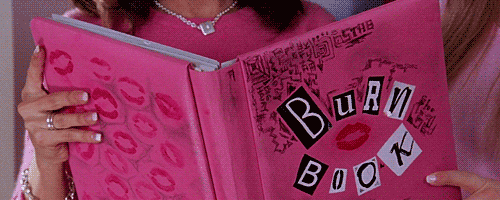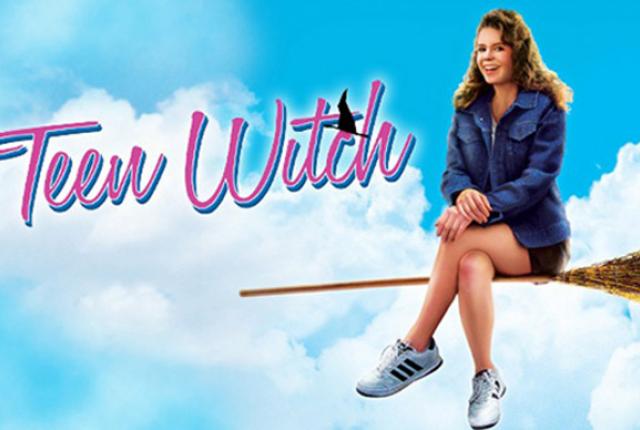Revisited: The Craft
On this day in 1996, a spell was cast upon tweens around the world. 17 years later, The Craft's still got it.

On July 4 1996, a spell was cast upon the tweens around the world: a movie called The Craft came into our lives. It was a formative film for Gen Y’s formative years, which that not only influenced fashion choices (velvet chokers and black lipstick, yeah it did!), but also our relationships, past-times, and interest in candles, sleepovers and séances.
We ’90s kids are a big fat bunch of nostalgia fiends — so why not give the people what they want?
The Craft starts out like any typical teen movie: Sarah (Robin Tunney) arrives in a new town and a new school. The town is L.A., the school Catholic, and the uniforms appropriated to suit character types and the era: pleated skirts are short, socks are thigh-high, and prayer beads are the perfect accessory.
Blonde hair + blazers = preppies.

Dark hair + piercings + off the shoulder hoodies = cool kids.

Enter newbie Sarah, motherless and troubled but on the whole a good, wise girl, who happens to be a little “different”.

After developing a crush on none other than ’90s heartthrob-slash-Scream-creep extraordinaire Skeet Ulrich, Sarah eventually falls in with a group of misfits.
Bonnie (Neve Campbell), Rochelle (Rachel True) and Nancy (Fairuza Balk) are also ‘different’.

Nancy is all dark eye make up, dog collars and attitude – and easily The Craft’s most interesting character.

Who, me?
Sarah’s arrival in town is fortuitous and meaningful for this threesome because — surprise — the rumours are true: the trio are witches, and, as Bonnie predicts two-minutes before Sarah appears, she elementally completes the group. Sarah is their ‘fourth’: earth, air, fire and water are united.
After a few bonding sessions that included a maybe-perhaps team-mind-murder of a vagrant man and some standard girl time – drinking each other’s blood while invoking the spirit of Manon – they become sisters in arms.

Commence slow motion walk in formation: white shirts, black skirts, all magic.
Manon is not a real God; he is The Craft’s made-up deity, with a nonsense name that harkens to Wiccan tradition. Much of The Craft’s spiritual content resembles real religion — by way of incantations, and having a “Wicca consultant” on set — but the film is firmly fixed in supernatural fiction.
THE MEMORIES
But that it was fiction didn’t stop us from emulating the different supernatural sequences with naïve enthusiasm and belief: Millennials everywhere praised Manon and practised witchcraft-lite. Trialling a Ouija board or chanting “light as a feather, stiff as a board,” at a slumber party was as integral for that age as your first kiss or sip of beer.

–
Teen Witches 4Eva!
The teen witch phenomenon was not unusual: the Salem witch trials piqued interest in class, and a bevy of films, young adult books and TV shows capitalised on it.
But from the mid-to-late ’90s, a particular witchcraft boom was upon us, with The Craft at its core.
This was because The Craft wasn’t falsely saccharine like Sabrina, Practical Magic or Charmed. There was an exaggerated teen realism to The Craft that saw it cement the witchy trend, and infiltrate our lives. The film wasn’t just scary because it was a supernatural horror film; it was scary because it was about high school girls with power. And when you’re a high school girl, there’s nothing scarier than that.

Unwittingly, The Craft formed a collective covenant across the corners of the country – North, South, East, West – as young girls (and some young boys) attempted to rein some kind of control over their lives that were fraught with change.
We were filled with envy when Sarah glamoured her hair from brown to blonde in one swift move. The Craft just got us.

Random fact: Sarah’s hair was played by a terrible wig that Robin Tunney had to wear, after shaving her head for her role as “Sinead O’Rebellion” in Empire Records.
Kids Can Be So Cruel
But the biggest appeal of the film lay in how Sarah, Bonnie, Nancy and Rochelle bonded as sisters. Being understood by and banding with our friends was the height of importance growing up; school and friendships were your life, and dabbling in faux-witchcraft could bind you together an overly earnest sisterhood. These girls were cool; they drank beer, smoked cigarettes, practiced magic and had each other’s back… or did they?
School wasn’t always the best time for most people, and in this fictional version it’s no different. Well it’s a little different, because people were killed and had powers, but the forever-relevant Carrie-esque states of social anxiety permeated The Craft. And upon rewatching it now, I realise just how cruel these girls were: The Craft girls were the original Mean Girls.

The Craft is built on a foundation of bullying, the grandest of teen movie traditions, where there are morals to uphold and lessons to be learnt. Following on the outsider path, The Craft was full of very bleak issues (upon issues, upon issues), and Big Themes like racism, socio-economic resentment, date rape, suicide and body image.
Before Gretchen Weiner, her sister-from-another-TV-mother was bitching it up: Bonnie pleads for Manon to take her scars and make her beautiful. Once it works, Neve Campbell’s signature smile shifts from shy Party of Five innocence to Wild Things manipulative. Bonnie becomes hot and selfish, and nothing else matters to her.
These girls would pay the price for being bullies (even if avenging an injustice), and their all-consuming selfishness would regenerate as punishment threefold. Not that that stopped my friends from putting hexes on people we didn’t like, while living in fear of our own social standing: during these troubling years, bitches and witches were often interchangeable.



In their own foursome, Nancy was the ultimate frenemy. She was loyal to the point of magic-based revenge-rape after Sarah is attacked by Chris Hooker (Ulrich). But when Sarah binds Nancy from doing harm, believing she was getting out of control, Nancy – and the others – turn on Sarah.
And shit gets real.
There are snakes, storms, plane crashes and BFF-battles. It’s full on. But of course, goodness wins out: Nancy ends up in a psychiatric facility (again, morals and issues), and powerful Sarah lives on.
As does the power of The Craft.
Watching it now, the shared social experience the film once encouraged resurfaces as recollection with friends; rather than casting spells or mimicking style (mostly), we exchange familiar anecdotes about this time in our lives. We may have come from different walks of life, but The Craft still manages to bind us.
–
If you’re in Melbourne on July 25, be sure to don some rose-colour glasses and stop by the Gasometer Hotel, where a bunch of awesome writers will be waxing nostalgic about The Craft, witches and the ’90s. Find out more here. We’ll hex you if you don’t.
–
Stephanie Van Schilt is Deputy Editor of The Lifted Brow and a freelance writer. She’s been published in Crikey, Cineaste and Killings. Follow her on twitter: @steph_adele.


